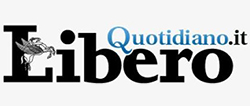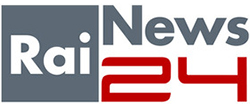Israel withdrew from the disputed village of Ghajar

Israel announced its decision to withdrawal from the disputed border village of Ghajar located on the Golan Heights, but Hezbollah declared on Saturday that the group’s weapons are still necessary to resistance against Israel.
On Wednesday the Israeli Security Cabinet approved the unilateral withdrawal from the northern part of Ghajar, an Alawite village of 2,210 people that sits on a strategic corner where the boundaries between Syria, Lebanon and Israel are in dispute.
Israel captured Ghajar in 1967’s war. After Israel ended an 18-year occupation of southern Lebanon in 2000, in attempt to demarcate permanent borders between Israel and Lebanon the UN used the Blue Line - the original border line between the French Mandate for Syria and Lebanon and the British Mandate for Palestine - splitting the village in two parts and leaving the northern part under Lebanese control and the southern part under the Israeli control.
Fearing Hezbollah would use Ghajar as a base for attacks on Israel, the Second Lebanon War in 2006 gave to Israel the opportunity to retook the northern part of the village. Since the negotiations for mutual agreed changes to the boundaries between Israel and Lebanon that could save the integrity of the village failed, UNIFIL proposed a plan that would allow the IDF to leave the northern half of the village.
With the unilateral withdrawal Israel will be in line with the UN Resolution 1701 which ended the 2006 Lebanon War and assigned the southern part of Ghajar to Israel and the northern part to Lebanon. But Israel is also seeking the UN's official recognition to prevent Lebanese factions from raising further territorial demands, such as the future of the Sheba Farms.
Unites States of America, European Union and the UN have all praised the Israeli decision to pull out from the northern half of the town, but this arrangement created resentment among the residents, who see themselves as Syrian.
Some of them took the streets on Wednesday to protest against the withdrawal plan. There is the fear that the Israeli withdrawal could divide the village and separate residents from each other.
Najib Khatib, a village spokesman, complained during an interview to the Israeli Army Radio that no one had spoken with them about the new withdrawal plan. “I shouldn’t have to need an ID card to pass through my own village to see my sister,” he said. “We don’t mind which side we end up on, but we want the whole village and our land to be on the same side.”
“Israel has no intention of dividing the village and its residents would continue to have free movement throughout Ghajar and in and out of Israel, as they do now” Israel Foreign Ministry spokesman Yigal Palmor responded.
The Israeli exit strategy has been worked out exclusively with the United Nation Interim Force in Lebanon (UNIFIL). Once the IDF withdrew into the southern part of the village, the international force would then be stationed along Ghajar’s northern perimeter. The Lebanese government has not been involved.
However Hussein Khalil, the political adviser to Hezbollah leader Hassan Nasrallah, declared that “the resistance and its weapons are still a national need to liberate remaining occupied Lebanese territories especially Sheba Farms”, another small piece of land with disputed sovereignty on the border but that it is not covered by United Nations Security Council Resolution 425, which governed the withdrawal from Lebanon, and that for this reason is not considered Lebanese territory. Further the position of the Lebanese government seems to say that the planned Israeli withdrawal from Ghajar would not satisfy Beirut’s demands.
Reportage published by Digital Journal on 21st November 2010.

















